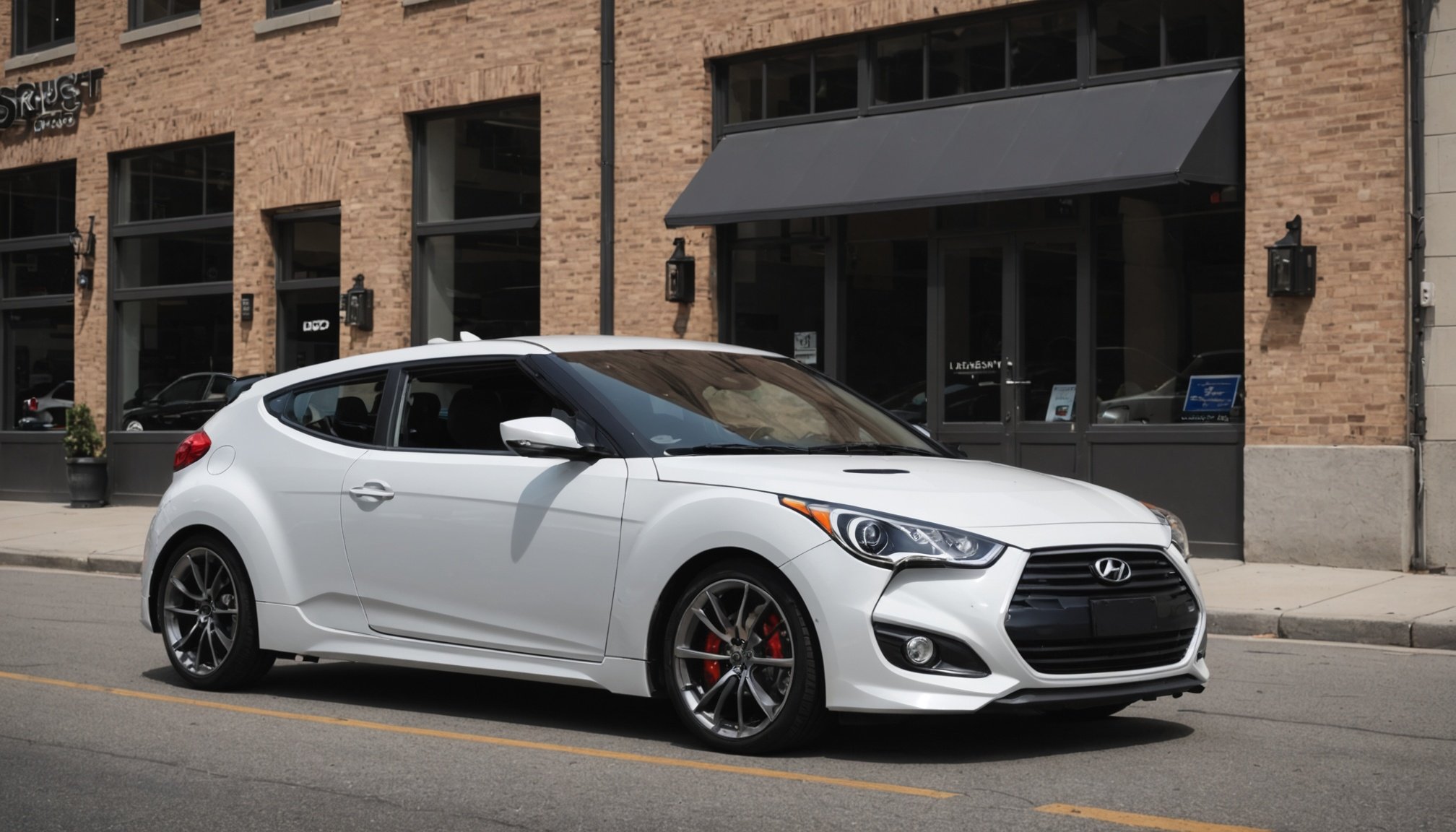Overview of Custom Exhaust Systems
Custom exhaust systems are aftermarket modifications designed to replace the factory exhaust components of a vehicle. They allow for increased engine output by optimizing exhaust flow. These systems are tailored to meet the vehicle’s specific needs and the driver’s performance desires, making them a popular choice for car enthusiasts.
For the Hyundai Veloster Turbo, custom exhaust systems significantly enhance performance. The Veloster Turbo already features a design optimized for efficiency, but a custom exhaust can further improve this by allowing the engine to breathe more freely. The primary advantage is a noticeable increase in horsepower and torque.
Also to discover : Ultimate Guide to Choosing the Top Undercoating for Your Toyota Tacoma Against Rust in Coastal Environments
Performance Enhancements for Hyundai Veloster Turbo
Custom exhaust upgrades affect key performance metrics, resulting in several benefits:
- Improved Horsepower: By reducing back pressure, exhaust gases exit more efficiently, enabling the engine to generate more power.
- Enhanced Torque: The improved airflow dynamics contribute to better engine response and acceleration.
- Fuel Efficiency: Optimizing the exhaust flow can lead to better fuel economy, a notable advantage.
Such exhaust upgrades not only increase raw power but also contribute to the overall driving experience with a deeper, more robust exhaust note that many drivers find appealing.
This might interest you : Transform Your Tesla Model X: Discover the Ultimate Guide to Boosting Interior Ambiance with LED Lighting
Types of Custom Exhaust Systems
When considering types of exhaust systems, various configurations offer unique performance and acoustic benefits. Understanding these options is key for automotive enthusiasts seeking tailored solutions.
Cat-Back Exhaust Systems
A cat-back exhaust system includes the portion of the exhaust from the catalytic converter to the back of the vehicle. This upgrade often includes a mid-pipe and muffler, enhancing the vehicle’s sound and potentially improving horsepower by reducing back pressure. These systems are usually constructed from stainless steel or aluminized steel, with each material impacting longevity and weight. Stainless steel provides durability and resistance to corrosion, while aluminized steel is lightweight and cost-effective, offering moderate performance enhancements.
Header Upgrades
Header upgrades replace the factory exhaust manifold, allowing for improved exhaust flow. Headers are designed to allow each cylinder to expel exhaust gases in a more efficient manner. This results in better engine breathing and can lead to significant performance gains, especially at higher RPMs. The design and material choices, such as ceramic-coated or stainless steel, play a crucial role in enhancing thermal management and durability.
Axle-Back Exhaust Systems
An axle-back exhaust system modifies the marketable parts from the rear axle to the exhaust tip. Compared to cat-back systems, they are less comprehensive but can deliver a noticeable auditory change and a slight performance boost. Axle-back systems are often preferred for easy installation and cost-effectiveness when minor improvements are adequate.
Installation Process for Custom Exhaust Systems
Embarking on the journey of an exhaust installation comes with exciting opportunities and crucial considerations. Whether choosing a DIY installation or leaning towards a professional installation, understanding the steps involved is vital.
Step-by-Step Overview of the Installation Process
To begin a DIY installation, having a clear plan is essential. Removing the old exhaust requires tools like a wrench set, a jack for vehicle elevation, and anti-seize lubricant. Carefully disconnect any sensors and mounting brackets. Next, align the new exhaust system, ensuring accurate placement for performance. Secure the components in reverse order, tightening bolts to the manufacturer’s specifications.
Tools Required for a DIY Installation
An effective DIY installation hinges on having the right tools. Essential items include:
- Wrench set
- Ratchet and socket set
- Jack and jack stands
- Exhaust hanger removal tool
Benefits of Professional Installation for Performance and Safety
Choosing a professional installation ensures precision and safety. Experts have the knowledge to optimize the system for enhanced performance, aligning parts to minimize emissions and increase efficiency. Professional installers also handle complex adjustments, reducing the risk of accidents due to improper assembly. The confidence in reliability and quality makes this option appealing to many.
Performance Gains from Custom Exhaust Systems
When investing in a custom exhaust system, many car enthusiasts anticipate noticeable performance improvements. One of the primary benefits is an estimated increase in horsepower and torque enhancement. These gains are primarily due to improved exhaust flow, which allows the engine to ‘breathe’ more efficiently.
To quantify these improvements, several case studies have illustrated tangible results. For instance, a typical installation might yield a 5% to 20% increase in horsepower, depending on the vehicle and the exhaust system’s specifications. Torque gains are often in a similar range, enhancing the vehicle’s overall responsiveness and performance on the road.
However, to achieve optimal results, supporting modifications, such as upgraded intake systems, are crucial. These modifications ensure that the engine’s airflow is balanced and maximised, complementing the new exhaust setup. Without these, the potential gains might not reach their full capacity.
In real-world scenarios, the benefits of a custom exhaust system are often confirmed through performance benchmarks. These benchmarks include testing on dynamometers, which precisely measure horsepower and torque output, offering empirical evidence of the upgrade’s impact. Ultimately, a well-designed custom exhaust system, paired with necessary supporting modifications, can transform a vehicle’s performance, offering both enthusiasts and everyday drivers a more exhilarating driving experience.
Cost Considerations and Budgeting
Understanding the financial commitment for an exhaust system cost is crucial when planning upgrades. Two types—standard and custom exhaust systems—present different price points. Custom options often show versatility in tailoring to specific performance needs but come with higher costs. Vigorous research in this aspect is vital to avoid overspending.
Several factors influence the cost of a custom exhaust system. Primarily, materials play a significant role. Stainless steel, although more durable, often results in higher expenses compared to aluminized steel. Additionally, prestigious brands may charge a premium due to their recognized reputation in producing quality parts. The installation method also alters the price—more complex installations by professionals increase costs significantly compared to simpler DIY options.
Balancing the value against the performance from an exhaust system is critical. While a more expensive system may initially deter due to its upfront costs, the potential for long-term savings should not be overlooked. Longevity and the reduction of recurring maintenance expenses can make a seemingly costly custom system more economical over time. Therefore, a competent budget must weigh both initial costs and future benefits, aligning financial planning with desired performance gains.
Comparing Custom Exhaust Systems to Stock Exhausts
When exploring a stock exhaust comparison, the key lies in understanding both design and performance. Stock exhaust systems are optimized for durability and compliance with regulations. They often prioritize noise reduction and cost-effectiveness, influencing their design decisions. In contrast, custom systems focus on performance enhancements, including increased horsepower and torque.
One significant difference is in the performance of stock systems versus aftermarket ones. Stock systems typically use restrictive components to minimize noise. Conversely, aftermarket solutions like custom exhausts replace these with larger pipes or free-flow catalysts, enhancing engine breathability. This leads to better power delivery and acceleration.
Aftermarket advantages also extend to weight reduction. Manufacturers often use heavier materials in stock systems to reduce production costs. Custom exhaust systems, on the other hand, frequently utilize lightweight materials such as stainless steel or titanium. This reduces the vehicle’s overall weight, boosting performance even further.
Real-world examples illustrate these discrepancies in performance. Many enthusiasts report noticeable improvements in their vehicle’s responsiveness and efficiency after switching to a custom system. Improved exhaust flow not only delivers a more satisfying auditory experience but also underscores the benefits of weight reduction. For those seeking to maximize their vehicle’s potential, custom exhaust systems offer compelling advantages over stock options.
Personal Testimonials and Case Studies
Customer reviews are instrumental in painting a vivid picture of the Hyundai Veloster Turbo’s performance enhancement after exhaust system upgrades. Appreciative owners frequently share enlightening performance testimonials that underline the perceived benefits experienced during their drives. Many describe an immediate improvement in horsepower, attributing it to the upgraded exhaust systems, reflecting heightened satisfaction levels with their vehicle’s performance.
Case studies provide an empirical evaluation of the transformative journey of these vehicles. By comparing data from pre and post-installation phases, these studies demonstrate tangible enhancements in speed and efficiency. The consistency between individual experiences and case study results offers a compelling narrative on the value these upgrades bring to the Hyundai Veloster Turbo.
Community feedback further enriches the conversation. Forums and social media platforms teem with discussions that reflect a collective affirmation of these enhancements. Popular opinion often turns towards recommending specific brands based on performance satisfaction, ensuring new users have access to well-vetted options.
Engaging with these shared experiences through testimonials and case studies not only showcases the tangible benefits but also fosters a supportive community eager to maximise their vehicles’ potential. These elements, in combination, illustrate the powerful impact of these exhaust system upgrades.











